Coturnix Quail Education Time: *** STILL EDITING THIS FOR MY PAGE, however all the info is already here it's just some states links arent clickable****
Since I see a lot of people interested in this adorable "breed" of quail, I thought I'd make a post to help educate newbies about them. I see questions so much I've decided to make this post, so that when someone asks again I can bring up this link for them to read and see about these wonderful lil guys. I also want to add, if you have ANY specific questions, you can PM me, or post on the "other fowl" main and many of us coturnix quail owners/breeders will be happy to help answer any specific questions you may have....this "caresheet" below is a rough list of care, genetics and whatever else I thought up at the moment but I realize that there may be specific questions that aren't answered here so ask away!
I also want to add, if you have ANY specific questions, you can PM me, or post on the "other fowl" main and many of us coturnix quail owners/breeders will be happy to help answer any specific questions you may have....this "caresheet" below is a rough list of care, genetics and whatever else I thought up at the moment but I realize that there may be specific questions that aren't answered here so ask away! 
Coturnix quail in their native lands are migratory birds. They were captured, and kept for their singing ability (which is funny since they don't sing really, but the male will do a "koo-tur-nix!" call during breeding season- hence their name), they were then bred for their egg and meat production.
They are native to Europe, Asia, and Africa.
They migrate over the mediteranian sea and that's where the Egyptians collected the weak flying in from the sea and where a lot of the domestication seems to come from. Also in Japan.
Coturnix and the coturnix subspecies seem to have been interbred together during domestication.
Coturnixs are known as Pharoah Coturnix, and Jumbo Coturnix to name a few
Pharoah pretty much means the wild type, Jumbos are just larger selectivly bred Coturnix
Colors are as follows (though not limited to-- because many new morphs are able to come up all the time).
*Pharoah Coturnix- Wild color
*Jumbo Brown Coturnix- Wild color but bred larger
*English White- smaller than the below A &M but closely related to it as EWs are the gene that was incorporated to produce the A&Ms...come in pure white to pure white with brown spots mainly on back of head but also can be found on back. Pure white meat.
*A & M- Selectively bred by A & M Texas college for their white meat and pure white feathers- can also have brown spots on back of head and or on the back.
* Golden (aka Manchurian, Golden Speckled)- in normal size and jumbo
*Tibetan (aka British Range aka Rosetta)- dark 'Chocolate" coloring- can come in light and cinnamony forms as well
*Tuxedo- this bird is produced by breeding an A&M to a British range
* Silver
*Cinnamon
*read head
*black
*** Rosetta- I have read it's a hybrid but after talking to an experienced breeder it comes to my attention that it's nothing more than a tibetan crossed with another tibetan--- when you cross this same color together, you can get almost black looking birds to reddish looking birds depending on your luck.
Normal adult coturnix quails are around 3 1/2 to 5 ozs
Jumbos are said to get up to an lb in weight
Coturnix breeding season
March through September it seems however if kept under artificial lighting for atleast 14 hours a day, they can lay all year long.
Coturnix hens will lay an egg a day for their lives once they are 6-8 weeks old during breeding season, OR under artificial lighting. Eggs come in speckled, dark brown,blue, blue brown and pure white.
Examples:
I finnally got a blue egg while I had a white egg! e!!!!
e!!!!


^It may be hard to tell upclose but in smaller pictures you can REALLY tell
The birds seem to loose fertility as they age...a bird over a year old seems to have much less fertility than a younger bird. I personally plan to move out birds over a year old for newbies. As it seems birds at 2 years old dont produce as much, or their eggs dont' seem to be as fertile---not my experience other breeders experiences im taking into consideration and sharing with you all!
Sexing
Sexing chicks can sometimes be challenging, but in browns and goldens, it's sometimes easy to sex them at 3-4 weeks old just simply by taking a gander at thier breast feathers. These chicks are 3 weeks and 1 day old and it's extremely easy to see who's male and who's female in my batch so hopefully this gives you guys a vantage point for your own batches:
Male (note the rusty color coming in):


Female (note the obvious spots with no rust coloring):


You can sex males by breast colors in the normal browns, and in some other colors listening for their calls or vent sexing may be needed.
Male coturnix CROWING:
http://s538.photobucket.com/albums/...ket.com/albums/ff341/quailgal/th_MVI_5898.jpg
In vent sexing the males will have a small pimple like bump...hens will not. Also the males you can actually press your fingers lightly together near the upper vent and if a white foam (almost looks like foam mousse) comes out that is a male...this substance isn't sperm, however it aids the sperm when breeding.
Foam substance (please note that you will ONLY get this foam when the birds are in breeding season..otherwise you'll just get a spit-like substance that I have learned is NOT the foam even the hens can express this spit substance so it's not a good way to sex...also these males that are in breeding season will have swollen bottoms):

Normal wild colored males (and goldens) will have a red (rusty) breast simliar to a male american robins breast....the hens will have a speckled breast (similar to a female american robins breast). Oddly enough, american robins are also a good size comparison with the normal wild (pharoah) coturnix quails size- except robins weigh less. Examples:

Male on left, hen on right

^ Two males

^ Hen on left male on right (bad photo, they were in a molt).

Male golden

^ Young hen golden on right, unsure of the sex on the golden on the left as it's almost white instead of golden. Note the speckled breast on the golden hen just as on the brown hen.
Note the speckled breast on the golden hen just as on the brown hen.
Other colors are very hard to tell visually by feathers, however a breeder I talk to seems to think that Tibetans (british range) coturnix's can be sexed at an early-adult age by the color of their beaks. Supposedly she has come to realize that all her dark beaked tibetans are males, where as her lighter beaks tibetans are hens. Theres no documented proof of this though.
I do believe this theory above to be true....as here is a male---note the BLACK beak:

This is a hen tibe note the very dull colored beak not a bold black:

Breeding Ratio
Ideal breeding situations seems to be either in LARGE living facilities in collonies more hens than males ofcourse
or seems 1 male to 4-5 hens
I personally have both methods planned for my birds depending on colors and who I want to selectively breed.
Breeding Genetics
There is dominant and recessive colors in genetics. Dominant means that it WILL be the visual color you see. Recessive means that it needs TWO birds with the same color to produce it where as dominant only needs one bird of this color for the color to show up. For example...Golden is a dominant color, you can breed a golden to a normal brown, and produce a golden...because it's dominant. Heres a list of what I have learned is recessive and dominant. Incomplete dominant means mainly that it will cover only certain places of the bird, and that not every chick born will be that specific color (from what I have learned).
Black- Dominant
Cinnamon- Recessive
Extended Brown- Incomplete dominant over normal colored (i dont know much about this one).
White (A & M/English)- Recessive
Red Head- Recessive
Silver- Incomplete Dominant
Tuxedo- Recessive
Golden- Dominant
Range (british range- tibetan) Dominant
As I learn how to produce certain colors I will happily post the findings.
Golden is said to be fatal if breeding Golden to a Golden. Said to loose 25% of hatch, where as others have had 100% hatches out of breeding Golden to Golden. If you want to be on the safe side just breed your Golden to a brown and you'll get mostly Goldens. If not, possibly expect some eggs not to hatch.
How to produce a Tuxedo- cross an A & M with a British Range.
A Golden bred to any white looks to produce a bird that's mostly white with golden feathers, very pretty! *I have one, I think it's a male but I am unsure as it's got so much white on it lol*
Breeding a PURE White (no spots) *either a & m or english white* to another pure white (no spots) will produce 25-50% pure whites, others will more than likely have spots (wild colored spots on back of head neck and possibly back).
THIS information right here isn't prooven, however it SEEMs that breeding a Tibetan (british range) to a Tibtan (british range) can produce a much darker bird (almost black looking- with some red tinting). I have a few such birds I aquired from a breeder and am planning to pair these birds up to see if it can produce an even DARKER bird.
Housing
What has been shown to work greatly for others is 1 sq ft per bird.
Wire flooring seems to be ideal, however many also have them on solid ground with bedding like wood shavings (no cedar bedding as it can harm their respiratory systems).
They can be housed indoors or outdoors even in large rabbit hutches.
They do well in winter weather as long as they have shelter and are free from drafts just like any other bird should be cared for in.
Most do keep them outside however mostly because of their high ammonia smell.
My Pens and Hutch:
Pens on left hutchon right covered in heavy duty tarps to the ground on cold/windy/wet days to keep them sheltered well:
The front of the hutch pen:

My 6 hole pen with all but one pen occupied:

And here is both pens and hutch before they were occupied:

^^showing you my enclosures to give you ideas
Feeding
Nonmedicated game bird feed is ideal- crumbles is also ideal
I also reccomend grinding up kitten food (kibble or canned) and feed that to them atleast once a week if you can. It's best to feed chicks kitten kibble and adult quail cat kibble as too much fat in kitten food can really harm quail. A breder of 30 years told me that adult quail should only really be supplimented with cat food in the colder months because they need fat to burn for energy to keep warm, but in the summer months it can harm them (too much fat that they can have trouble processing).
Boiled eggs chopped up they also love
Mealworms, crickets, wax worms great treats and great protien
Grit for good digestion, oystershell for extra calcium
Fruit chopped up make a great treat as well as nonpesticied sprayed greens
Millet as a treat- it's not nutritionally complete for a full meal
You can feed chicken crumbles, however you will have to realize that it shouldnt be medicated, and you will need to incorporate more protien as quails need more protien than chickens do from what I have learned.
My experienced reccomendations
Clip their wings if you are planning on keeping them outdoors....all too often my quail enjoy hopping out of their pen when im in cleaning it, which is okay as I keep their wings clipped so they cannot fly away. They are STRONG fliers, and if they get spooked, I know of many breeders who have been devistated to loose a few. If one does get loose, calmly follow it and try to corner it (calmly i cannot stress this enough) and when you're close enough grab for it...idealy a net would be great here however I dont use a net but come to thnk of it i should probably get one ha ha!
Coturnix quail DO NOT PERCH...no need for branches in their enclosure unless you're using them for natural cover.
Fighting can occur...if it does remove the offender, or build a bigger cage with great hidey areas. Coturnix quails can and will kill eachother if left to their own devices. Feather picking is a big sign of stress.
To stimulate egg production indoors (or outdoors during off season) they need atleast 14 hours of light a day, and around 2 weeks you can expect eggs as long as the birds are healthy, mature, HENS, not too old, and fed well.
Incubation of eggs
*Incubation period is 16-17 days but can go as long as 18 days (almost all of mine hatched at 18 days...so i plan my hatches around 18 days just to be safe)
*Turn eggs atleast 3 times a day
*Stop turning atleast 4 days before eggs are due to hatch
*Every quail breeder has their own humidity and temp preferences....I keep the temps in between 99.5F and 101F...however I try to keep it at 99.5 Fas much as I can. Humidity I keep in the 40s until the last four days of incubation where i up it to 60%
It's best to have a towel or a kitchen mat or something similar that the eggs can lay on in the incubator so that when the chicks hatch they dont get their legs stuck in the tiny wire....as their feet are so tiny they will fall through.
Brooder
Tupperware containers, and even aquariums make great brooders
It's ideal to put a soft top on the top of the brooders as spooked chicks will shoot straight up and can injure their heads (deaths have even been reported). I use 1/2" craft foam..and i super glue it or tape it to the top of each brooder works great! Kitchen mats also work great. A blanket or towel could work as well.
Kitchen mats also work great. A blanket or towel could work as well.
Just like with chicken chicks...make sure you have bedding, some use paper towels for the first few days to avoid splay leg...i start out with aspen or pine bedding thickly placed on the bottom of the brooder, the chicks walk on it fine as long as it's thick (atleast an inch thick).
Raising Chicks
Chicks do well on game bird starter crumbles, you can grind it up more for them however they do well on it as is.
They mature at 6 weeks old
They can be let out of a brooder type environment at 4 weeks old but if what you're planing on putting them in next has a big temperature difference, it's important to make the transition gradual (temperature wise). You can do this by moving the brooder light farther and farther away while the chicks are nearing 4 weeks.
IMPORTANT- water needs to be full of marbles, or full of something that's nontoxic to keep chicks from drowning. I personally use craft animal stuffing...works GREAT! They can walk on it and not even get really wet and learn quickly (with a few beak dunks) to peck away some of the fibers to drink.
They can walk on it and not even get really wet and learn quickly (with a few beak dunks) to peck away some of the fibers to drink.
Speaking of beak dunking, it's smart to show the chicks thier water by lightly holding their beak tip to the water quickly then letting them lift their head to drink it up. Some chicks instinctually know where to drink and eat but others need some help. I assist my first group and the first group usually teaches the second group hatching a few hours later. I poke around like my pointer finger is a beak at their crumbles to get them interested in that.
Keep their brooder clean, I cleaned my brooder of over 30 chicks every 3 days, kept smell down and kept them clean. I change water atleast 3 times a day.
Most reccomend red heat lamps....I used both....had no problem with either. No picking, no bloodshed nothing in either tank. I did notice though in the red heat lamp brooder, the chicks got startled more when the red light went out until they adjusted to normal lights. I perfer normal colored heat lamps myself.
Coturnix Uses
*Genetics- various colors it's a lot of fun
*Eggs (sushi quail eggs are none other than coturnix eggs)!
*Meat- DELISHIOUS are ready for culling at 6 weeks in normal and 8 weeks in jumbo! All are dark meat except the A & M.
*PETs- I must say in my experience they are the most ideal quail to make as a pet...i call them "Mini chickens' for a reason.
*Dog/puppy flush and retrieval training
Processing Your Quail
https://www.backyardchickens.com/forum/viewtopic.php?pid=1554953#p1554953
Color picture examples
Pharoah:
Chick:
Adult:
Golden:
Chick:
Adult:
Tibetan (british range):
Chicks:
Adults:
They come in many lighter and darker colors that breeders like to name and try to pretend they're something new:
"rosetta":
Rosetta is VERY pretty, but it's nothing more than a Tibetan (british range).
Just like the DARK Tibetans i'm working for arent a NEW strain, they are the same ole strain (tibetan/british range) I'm just selectively breeding for the darker look.
Tuxedo: adult:
chick:
A & M: adult: <---these hens were in a breeding cage at the breeders so they have some feathers off of their neck from the male breeding them, once they get all their pretty feathers back in I'll get a better picture.
<---these hens were in a breeding cage at the breeders so they have some feathers off of their neck from the male breeding them, once they get all their pretty feathers back in I'll get a better picture.
chick:
Cute facts:
Coturnix quails will call despiratly when they see you (esp if they are hungry)...it reminds me of a purring yelk (Yelk like what a hen turkey does but quieter) but with a purr to it. I will try to get a video of my quails doing this. It sounds pitiful...these guys seem to always be hungry. They are very willing to eat out of your hand as well.
THey dont like being held, and may even act like you're killing them (crying) not all cry but some do and it's also pitiful and sort of comical. Kind of sounds like a "purreeee!" cry.
I've been puked on SEVERAL times by coturnixs that didn't want held. I don't think they use it as a defence mechanism I think they just freak out and upset their corp and BLAHHHH!

They can have little spats over food, however never any feathers pulled or blood shed, they remind me of siblings fighting over a remaining piece of candy.
A happy coturnix will bow and then bop up a few inches in a little dance...it can sometimes look like popcorn popping when more than one at a time is doing it.
They make a small growling sound when they see a bird flying overhead, they cock their head sideways and look up with one eye to the sky and one or two will growl, its' very light sounding but audible....all the quail will freeze in place when the growl goes out and they all watch the sky until the "threat" is gone.
They LOVE to dust bathe, they will dust bathe in just about anything- their food, bedding, sand, dirt. Give them a dusting box with sand in it and watch them play! They can also eat the sand as grit! WARNING: they WILL make a mess
WARNING: they WILL make a mess  .
.
Chicks normally hatch in unision....my experience is they hatch in small batches within just seconds from eachother. They call in the egg to eachother and they seem to synrinise thier hatching this way. Don't worry if they ALL dont hatch together give them time. I know of some coturnix quail hatchers that their chicks took DAYS after their true hatch date to hatch....so be pacent I know it's hard though!
I know of some coturnix quail hatchers that their chicks took DAYS after their true hatch date to hatch....so be pacent I know it's hard though! 
They sound like crickets, or peeper frogs...esp as chicks, but even adults will make the noise.
Mine huddle in a heep of birds when they're taking a nap...it's extreemly adorable. Most lay on their sides all carefree. *in the pic the small one in the middle is not a coturnix, it's a button quail*

Chick vid: http://i538.photobucket.com/albums/ff341/quailgal/th_MVI_1847.jpg
adult quail vid:
http://i538.photobucket.com/albums/ff341/quailgal/th_MVI_3880.jpg
will add more as I get more pictures and information. HOpe this helps newbies!
State laws and permits *IF YOU KNOW OF ANY OF YOUR STATES LAWS---Especially ones I don't know about please contact me so I can add them to this list for others thank you!*
Alabama- ?
Alaska- Thanks to Mrs AK (Tori) got some offical info : http://www.wc.adfg.state.ak.us/index.cfm?adfg=regulations.misc#aviculture]http://www.wc.adfg.state.ak.us/index.cfm?adfg=regulations.misc#aviculture
5 AAC 92.029. PERMIT FOR POSSESSING LIVE GAME. Section (b) "The following species, not including a hybrid of a game animal and a species listed in this subsection, may be possessed, imported, exported, bought, sold, or traded without a permit from the department but may not be released into the wild: " Click the link above to be sent to the total information .
.
Arizona- Yep you need a license. I can't find specific information but here is where I found that you do need a licensing for it.
Arkansas- A permit IS needed $50 info provided by a resident of Arkansas and a BYC member, Amanda (rbamterry) thanks![/url]
California- "Licensed Game Bird Club
Issued to any person who owns or controls the hunting rights on a tract of land, raises and/or releases domestically propagated game birds, and allow the taking of these birds under conditions that do not conflict with the public interest. Domestically propagated game birds include only the following: Pheasants of the species Phasianus colchicus, including all ring-necked pheasant races, Indian chukar, domestically reared wild turkey, Hungarian partridge, bobwhite quail, Coturnix quail, and other species as designated by the Commission." http://www.dfg.ca.gov/licensing/specialpermits/specialpermitsdescrip.html]http://www.dfg.ca.gov/licensing/specialpermits/specialpermitsdescrip.html
Colorado- ?
Conneticut: http://www.ct.gov/dep/lib/dep/wildlife/forms_applications/gamebreed.pdf]Game Breeders License Application[/url] Please contact CT's DEP for more information:
Connecticut Department of Environmental Protection
79 Elm Street
Hartford, CT 06106-5127
Phone: 860-424-3000 or email at : [email protected] (Please include your name, postal mail address and telephone number in any e-mail inquiries. In many cases it would be most efficient to respond to you by telephone or postal mail.)
Deleware- Not sure here's some http://www.fw.delaware.gov/Pages/ContactUs.aspx
Florida- ?
Georgia- ?
Hawaii-?
Idaho- Not really sure there is some sort of poession and selling permit however I'm not sure if it applies to coturnixs. http://fishandgame.idaho.gov/cms/licenses/apps/ Heres the info on it.and you can contact Idahos game people http://fishandgame.idaho.gov/inc/contact.cfm here.
Illinois- http://www.fws.gov/offices/directory/ListOffices.cfm?statecode=17 Links to try
Indiana- http://www.fws.gov/offices/directory/ListOffices.cfm?statecode=18
Iowa- ?
Kansas- No PERMIT NEEDED
Kentucky- Looks like a permit Is needed as they seem to be considered an exotic...heres the info i could find .
Louisiana- Not sure but heres some contact info: "2000 Quail Drive Baton Rouge, LA 70808 (225) 765-2800 Business Hours: 8:00 - 4:30, Monday - Friday"
Maine- Posession Application This is a posession application to notify "Maine Department of Inland Fisheries and Wildlife" of what you'd like to raise and why. I am a bit confused as I can't find where it lists what you CAN and can't raise...so you may have to contact them at: Phone: (207) 287-8000 Address: 284 State Street
Augusta, ME 04333-0041 *If I find more, I will surely post it here*
Maryland- Not sure heres some contact info
Massachusetts- Need A permit (will get contact info for you soon).
Michigan- Links to try
Minnesota- Links to try
Mississippi-
Missouri- Not sure here's some links that might help.
Montana- Links to try
Nebraska- Not sure but please check these links out.
Nevada- Not too sure just yet but heres some info that may help get you the info you need: Office Directory Listing
New Hampshire- Not sure yet, however here is contact info for who you can call to find out: Law Enforcement Division
[email protected] Phone: 603-271-3127
New Jersey- A permit is needed for all quail it seems- looks to be $12 total. You will have to sell with each bird(s) a reciept "Game Bird Sales Reciept". Right here is where you can find this info in print: Permit info Here is the link where I found that .
New Mexico- Unsure but these may help...
New York- in NY in order to hatch, sell or breed quail you need a Class A Gamebird Breeders Licence
it is $50 a year and the year goes from April-April not on the new year like one would think.
as far as selling the quail meat in your local farmers market or homestand you are allowed up to 1000 birds with no licence of any kind as long as the birds are grown, and raised and processed by you. You must also be the one selling them, in otherwords the meat/bird can never leave your posession at any time during its life. Recieving day old chicks from a hatchery is an exception since you are the one raising them from the beginning. <---New updated info is from AHappyChick who called the number below and got the updated info! Thank you!
Thank you!
Please contact here for information and to get the permit needed:
" NYSDEC
Special Licenses Unit
625 Broadway
Albany, NY 12233-4752
518-402-8985"
North Carolina- Need A permit (will get contact info for you soon)
North Dakota- Not sure but you can contact them by email here: [email protected] or call 701-328-6300
Ohio- No permit needed- you can buy, sell, trade and breed these guys free of worry.
Oklahoma- Not sure please check out these links though.
Oregon- Yes a permit is required- it's $8 total for annual permit. You can contact: "ODFW Wildlife District or Regional office or call the ODFW Licensing Section at (503) 947-6100 and ask for a Wildlife Propagation License application form."
Pennsylvania- No permit needed- you can buy, sell, trade and breed these guys free of worry.
Road Island- Any links I try to find on this aren't loading???
South Carolina- Links to try
South Dakota- Not sure but check these links out may be of some help.
Tennessee- Links to try
Texas- Not sure please check out these links
Utah- "http://wildlife.utah.gov/rules/R657-04.php It doesn't specifically mention Corturnix like it does bobwhites and several others, but the number people can call is (801) 538-4700. " Thanks to Heather J I got offical info on this
Vermont- Vermont links I could find that may help find out
Virginia- Possibly the permit application you'd need.
Washington- Yes it seems like a permit IS required heres the application. I got that from HERE .
West Virginia- Not sure yet- if you want information please call Law Enforcement at 304-825-6787 from 8-4pm- I am emailing them to see if I can get info that way as well. You can email them as well at [email protected] .
Wisconsin- Links to try .
Wyoming- Not sure you can contact the Wyoming Game and Fish Department here or call 307-777-4600 .
^ Will add more as I collect the right information- can you help? If you know a states laws on coturnix quail PLEASE PM me, i'll credit you for the INFO and post it on this list
Since I see a lot of people interested in this adorable "breed" of quail, I thought I'd make a post to help educate newbies about them. I see questions so much I've decided to make this post, so that when someone asks again I can bring up this link for them to read and see about these wonderful lil guys.
 I also want to add, if you have ANY specific questions, you can PM me, or post on the "other fowl" main and many of us coturnix quail owners/breeders will be happy to help answer any specific questions you may have....this "caresheet" below is a rough list of care, genetics and whatever else I thought up at the moment but I realize that there may be specific questions that aren't answered here so ask away!
I also want to add, if you have ANY specific questions, you can PM me, or post on the "other fowl" main and many of us coturnix quail owners/breeders will be happy to help answer any specific questions you may have....this "caresheet" below is a rough list of care, genetics and whatever else I thought up at the moment but I realize that there may be specific questions that aren't answered here so ask away! 
Coturnix quail in their native lands are migratory birds. They were captured, and kept for their singing ability (which is funny since they don't sing really, but the male will do a "koo-tur-nix!" call during breeding season- hence their name), they were then bred for their egg and meat production.
They are native to Europe, Asia, and Africa.
They migrate over the mediteranian sea and that's where the Egyptians collected the weak flying in from the sea and where a lot of the domestication seems to come from. Also in Japan.
Coturnix and the coturnix subspecies seem to have been interbred together during domestication.
Coturnixs are known as Pharoah Coturnix, and Jumbo Coturnix to name a few
Pharoah pretty much means the wild type, Jumbos are just larger selectivly bred Coturnix
Colors are as follows (though not limited to-- because many new morphs are able to come up all the time).
*Pharoah Coturnix- Wild color
*Jumbo Brown Coturnix- Wild color but bred larger
*English White- smaller than the below A &M but closely related to it as EWs are the gene that was incorporated to produce the A&Ms...come in pure white to pure white with brown spots mainly on back of head but also can be found on back. Pure white meat.
*A & M- Selectively bred by A & M Texas college for their white meat and pure white feathers- can also have brown spots on back of head and or on the back.
* Golden (aka Manchurian, Golden Speckled)- in normal size and jumbo
*Tibetan (aka British Range aka Rosetta)- dark 'Chocolate" coloring- can come in light and cinnamony forms as well
*Tuxedo- this bird is produced by breeding an A&M to a British range
* Silver
*Cinnamon
*read head
*black
*** Rosetta- I have read it's a hybrid but after talking to an experienced breeder it comes to my attention that it's nothing more than a tibetan crossed with another tibetan--- when you cross this same color together, you can get almost black looking birds to reddish looking birds depending on your luck.
Normal adult coturnix quails are around 3 1/2 to 5 ozs
Jumbos are said to get up to an lb in weight
Coturnix breeding season
March through September it seems however if kept under artificial lighting for atleast 14 hours a day, they can lay all year long.
Coturnix hens will lay an egg a day for their lives once they are 6-8 weeks old during breeding season, OR under artificial lighting. Eggs come in speckled, dark brown,blue, blue brown and pure white.
Examples:
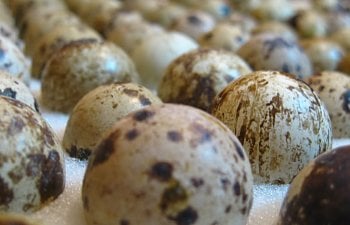
I finnally got a blue egg while I had a white egg!
 e!!!!
e!!!!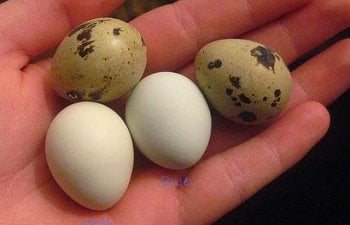
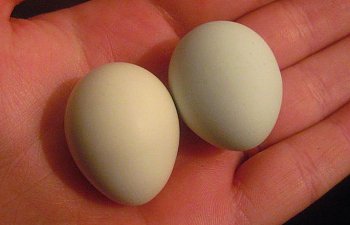
^It may be hard to tell upclose but in smaller pictures you can REALLY tell

The birds seem to loose fertility as they age...a bird over a year old seems to have much less fertility than a younger bird. I personally plan to move out birds over a year old for newbies. As it seems birds at 2 years old dont produce as much, or their eggs dont' seem to be as fertile---not my experience other breeders experiences im taking into consideration and sharing with you all!

Sexing
Sexing chicks can sometimes be challenging, but in browns and goldens, it's sometimes easy to sex them at 3-4 weeks old just simply by taking a gander at thier breast feathers. These chicks are 3 weeks and 1 day old and it's extremely easy to see who's male and who's female in my batch so hopefully this gives you guys a vantage point for your own batches:
Male (note the rusty color coming in):
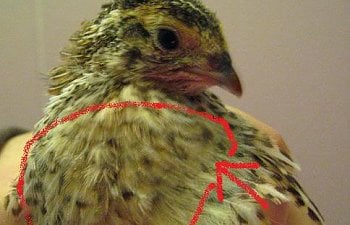
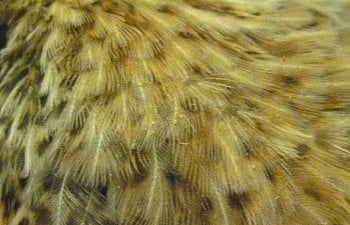
Female (note the obvious spots with no rust coloring):
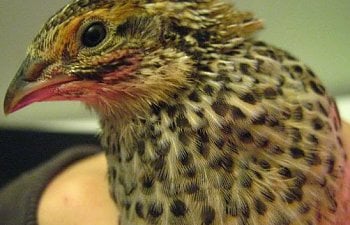
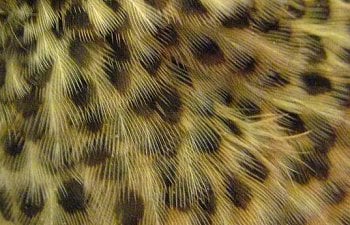
You can sex males by breast colors in the normal browns, and in some other colors listening for their calls or vent sexing may be needed.
Male coturnix CROWING:
http://s538.photobucket.com/albums/...ket.com/albums/ff341/quailgal/th_MVI_5898.jpg
In vent sexing the males will have a small pimple like bump...hens will not. Also the males you can actually press your fingers lightly together near the upper vent and if a white foam (almost looks like foam mousse) comes out that is a male...this substance isn't sperm, however it aids the sperm when breeding.
Foam substance (please note that you will ONLY get this foam when the birds are in breeding season..otherwise you'll just get a spit-like substance that I have learned is NOT the foam even the hens can express this spit substance so it's not a good way to sex...also these males that are in breeding season will have swollen bottoms):
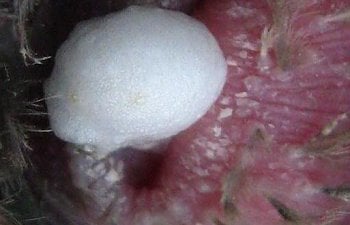
Normal wild colored males (and goldens) will have a red (rusty) breast simliar to a male american robins breast....the hens will have a speckled breast (similar to a female american robins breast). Oddly enough, american robins are also a good size comparison with the normal wild (pharoah) coturnix quails size- except robins weigh less. Examples:
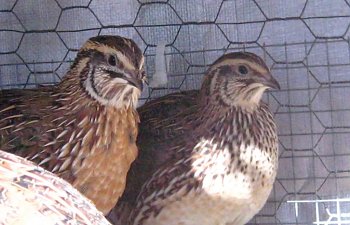
Male on left, hen on right
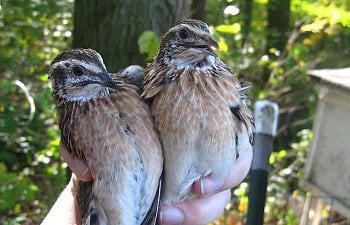
^ Two males
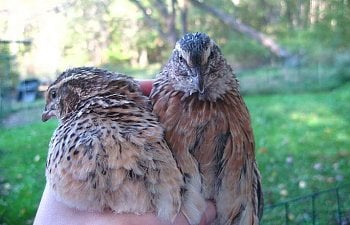
^ Hen on left male on right (bad photo, they were in a molt).
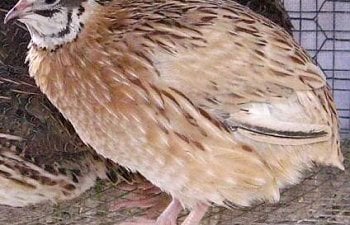
Male golden
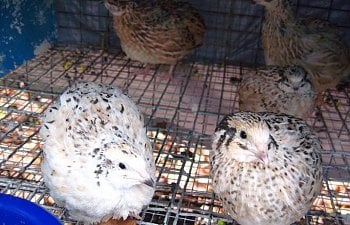
^ Young hen golden on right, unsure of the sex on the golden on the left as it's almost white instead of golden.
 Note the speckled breast on the golden hen just as on the brown hen.
Note the speckled breast on the golden hen just as on the brown hen.Other colors are very hard to tell visually by feathers, however a breeder I talk to seems to think that Tibetans (british range) coturnix's can be sexed at an early-adult age by the color of their beaks. Supposedly she has come to realize that all her dark beaked tibetans are males, where as her lighter beaks tibetans are hens. Theres no documented proof of this though.
I do believe this theory above to be true....as here is a male---note the BLACK beak:
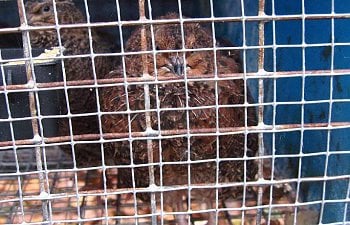
This is a hen tibe note the very dull colored beak not a bold black:
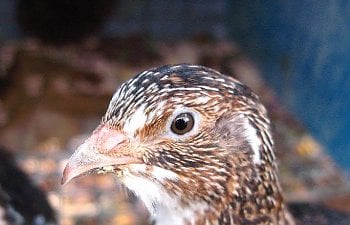
Breeding Ratio
Ideal breeding situations seems to be either in LARGE living facilities in collonies more hens than males ofcourse
or seems 1 male to 4-5 hens
I personally have both methods planned for my birds depending on colors and who I want to selectively breed.
Breeding Genetics
There is dominant and recessive colors in genetics. Dominant means that it WILL be the visual color you see. Recessive means that it needs TWO birds with the same color to produce it where as dominant only needs one bird of this color for the color to show up. For example...Golden is a dominant color, you can breed a golden to a normal brown, and produce a golden...because it's dominant. Heres a list of what I have learned is recessive and dominant. Incomplete dominant means mainly that it will cover only certain places of the bird, and that not every chick born will be that specific color (from what I have learned).
Black- Dominant
Cinnamon- Recessive
Extended Brown- Incomplete dominant over normal colored (i dont know much about this one).
White (A & M/English)- Recessive
Red Head- Recessive
Silver- Incomplete Dominant
Tuxedo- Recessive
Golden- Dominant
Range (british range- tibetan) Dominant
As I learn how to produce certain colors I will happily post the findings.
Golden is said to be fatal if breeding Golden to a Golden. Said to loose 25% of hatch, where as others have had 100% hatches out of breeding Golden to Golden. If you want to be on the safe side just breed your Golden to a brown and you'll get mostly Goldens. If not, possibly expect some eggs not to hatch.
How to produce a Tuxedo- cross an A & M with a British Range.
A Golden bred to any white looks to produce a bird that's mostly white with golden feathers, very pretty! *I have one, I think it's a male but I am unsure as it's got so much white on it lol*
Breeding a PURE White (no spots) *either a & m or english white* to another pure white (no spots) will produce 25-50% pure whites, others will more than likely have spots (wild colored spots on back of head neck and possibly back).
THIS information right here isn't prooven, however it SEEMs that breeding a Tibetan (british range) to a Tibtan (british range) can produce a much darker bird (almost black looking- with some red tinting). I have a few such birds I aquired from a breeder and am planning to pair these birds up to see if it can produce an even DARKER bird.

Housing
What has been shown to work greatly for others is 1 sq ft per bird.
Wire flooring seems to be ideal, however many also have them on solid ground with bedding like wood shavings (no cedar bedding as it can harm their respiratory systems).
They can be housed indoors or outdoors even in large rabbit hutches.
They do well in winter weather as long as they have shelter and are free from drafts just like any other bird should be cared for in.
Most do keep them outside however mostly because of their high ammonia smell.
My Pens and Hutch:
Pens on left hutchon right covered in heavy duty tarps to the ground on cold/windy/wet days to keep them sheltered well:
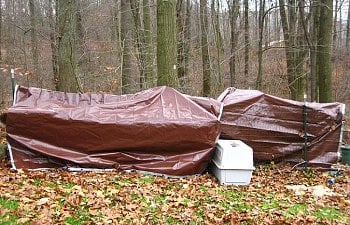
The front of the hutch pen:
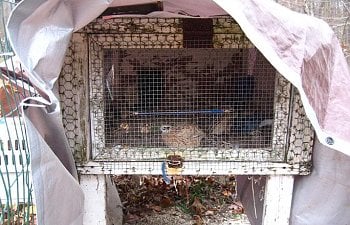
My 6 hole pen with all but one pen occupied:
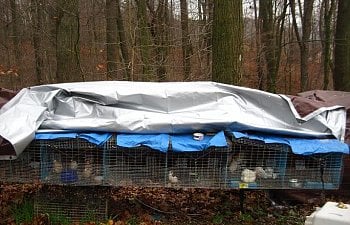
And here is both pens and hutch before they were occupied:
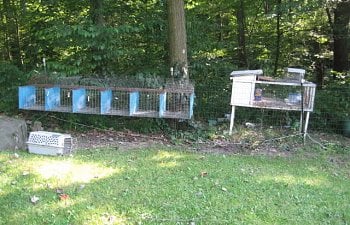
^^showing you my enclosures to give you ideas
Feeding
Nonmedicated game bird feed is ideal- crumbles is also ideal
I also reccomend grinding up kitten food (kibble or canned) and feed that to them atleast once a week if you can. It's best to feed chicks kitten kibble and adult quail cat kibble as too much fat in kitten food can really harm quail. A breder of 30 years told me that adult quail should only really be supplimented with cat food in the colder months because they need fat to burn for energy to keep warm, but in the summer months it can harm them (too much fat that they can have trouble processing).
Boiled eggs chopped up they also love
Mealworms, crickets, wax worms great treats and great protien
Grit for good digestion, oystershell for extra calcium
Fruit chopped up make a great treat as well as nonpesticied sprayed greens
Millet as a treat- it's not nutritionally complete for a full meal
You can feed chicken crumbles, however you will have to realize that it shouldnt be medicated, and you will need to incorporate more protien as quails need more protien than chickens do from what I have learned.
My experienced reccomendations
Clip their wings if you are planning on keeping them outdoors....all too often my quail enjoy hopping out of their pen when im in cleaning it, which is okay as I keep their wings clipped so they cannot fly away. They are STRONG fliers, and if they get spooked, I know of many breeders who have been devistated to loose a few. If one does get loose, calmly follow it and try to corner it (calmly i cannot stress this enough) and when you're close enough grab for it...idealy a net would be great here however I dont use a net but come to thnk of it i should probably get one ha ha!
Coturnix quail DO NOT PERCH...no need for branches in their enclosure unless you're using them for natural cover.
Fighting can occur...if it does remove the offender, or build a bigger cage with great hidey areas. Coturnix quails can and will kill eachother if left to their own devices. Feather picking is a big sign of stress.
To stimulate egg production indoors (or outdoors during off season) they need atleast 14 hours of light a day, and around 2 weeks you can expect eggs as long as the birds are healthy, mature, HENS, not too old, and fed well.
Incubation of eggs
*Incubation period is 16-17 days but can go as long as 18 days (almost all of mine hatched at 18 days...so i plan my hatches around 18 days just to be safe)
*Turn eggs atleast 3 times a day
*Stop turning atleast 4 days before eggs are due to hatch
*Every quail breeder has their own humidity and temp preferences....I keep the temps in between 99.5F and 101F...however I try to keep it at 99.5 Fas much as I can. Humidity I keep in the 40s until the last four days of incubation where i up it to 60%
It's best to have a towel or a kitchen mat or something similar that the eggs can lay on in the incubator so that when the chicks hatch they dont get their legs stuck in the tiny wire....as their feet are so tiny they will fall through.
Brooder
Tupperware containers, and even aquariums make great brooders
It's ideal to put a soft top on the top of the brooders as spooked chicks will shoot straight up and can injure their heads (deaths have even been reported). I use 1/2" craft foam..and i super glue it or tape it to the top of each brooder works great!
 Kitchen mats also work great. A blanket or towel could work as well.
Kitchen mats also work great. A blanket or towel could work as well.Just like with chicken chicks...make sure you have bedding, some use paper towels for the first few days to avoid splay leg...i start out with aspen or pine bedding thickly placed on the bottom of the brooder, the chicks walk on it fine as long as it's thick (atleast an inch thick).
Raising Chicks
Chicks do well on game bird starter crumbles, you can grind it up more for them however they do well on it as is.
They mature at 6 weeks old
They can be let out of a brooder type environment at 4 weeks old but if what you're planing on putting them in next has a big temperature difference, it's important to make the transition gradual (temperature wise). You can do this by moving the brooder light farther and farther away while the chicks are nearing 4 weeks.
IMPORTANT- water needs to be full of marbles, or full of something that's nontoxic to keep chicks from drowning. I personally use craft animal stuffing...works GREAT!
 They can walk on it and not even get really wet and learn quickly (with a few beak dunks) to peck away some of the fibers to drink.
They can walk on it and not even get really wet and learn quickly (with a few beak dunks) to peck away some of the fibers to drink.Speaking of beak dunking, it's smart to show the chicks thier water by lightly holding their beak tip to the water quickly then letting them lift their head to drink it up. Some chicks instinctually know where to drink and eat but others need some help. I assist my first group and the first group usually teaches the second group hatching a few hours later. I poke around like my pointer finger is a beak at their crumbles to get them interested in that.
Keep their brooder clean, I cleaned my brooder of over 30 chicks every 3 days, kept smell down and kept them clean. I change water atleast 3 times a day.
Most reccomend red heat lamps....I used both....had no problem with either. No picking, no bloodshed nothing in either tank. I did notice though in the red heat lamp brooder, the chicks got startled more when the red light went out until they adjusted to normal lights. I perfer normal colored heat lamps myself.
Coturnix Uses
*Genetics- various colors it's a lot of fun
*Eggs (sushi quail eggs are none other than coturnix eggs)!
*Meat- DELISHIOUS are ready for culling at 6 weeks in normal and 8 weeks in jumbo! All are dark meat except the A & M.
*PETs- I must say in my experience they are the most ideal quail to make as a pet...i call them "Mini chickens' for a reason.
*Dog/puppy flush and retrieval training
Processing Your Quail
https://www.backyardchickens.com/forum/viewtopic.php?pid=1554953#p1554953
Color picture examples
Pharoah:
Chick:
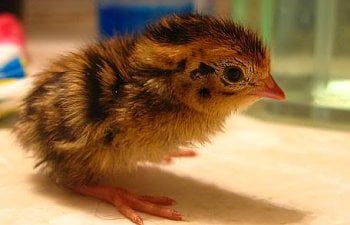
Adult:
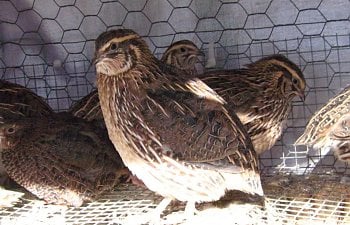
Golden:
Chick:
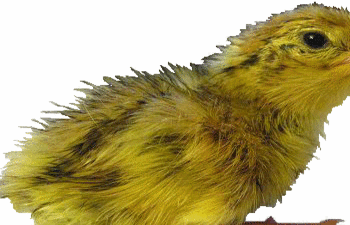
Adult:
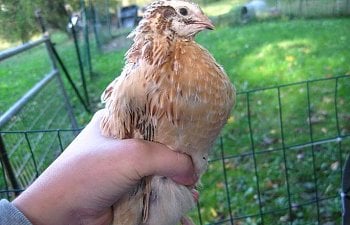
Tibetan (british range):
Chicks:
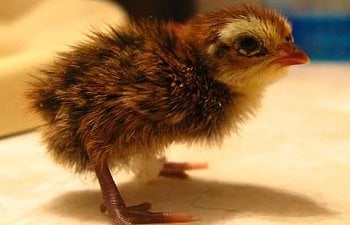
Adults:
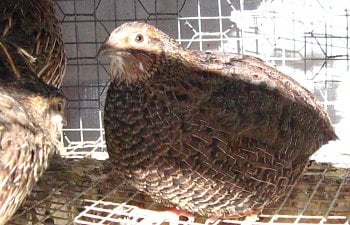
They come in many lighter and darker colors that breeders like to name and try to pretend they're something new:
"rosetta":
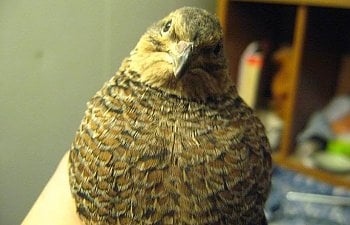
Rosetta is VERY pretty, but it's nothing more than a Tibetan (british range).
Just like the DARK Tibetans i'm working for arent a NEW strain, they are the same ole strain (tibetan/british range) I'm just selectively breeding for the darker look.
Tuxedo: adult:
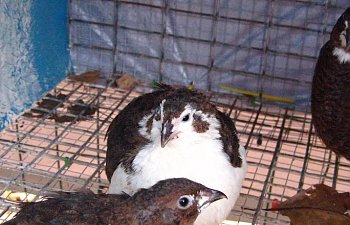
chick:
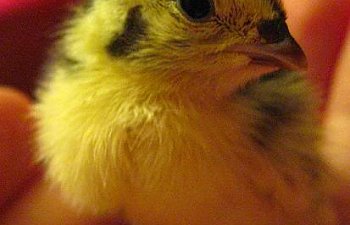
A & M: adult:
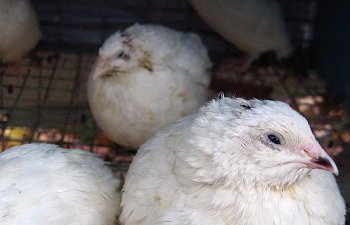 <---these hens were in a breeding cage at the breeders so they have some feathers off of their neck from the male breeding them, once they get all their pretty feathers back in I'll get a better picture.
<---these hens were in a breeding cage at the breeders so they have some feathers off of their neck from the male breeding them, once they get all their pretty feathers back in I'll get a better picture.chick:
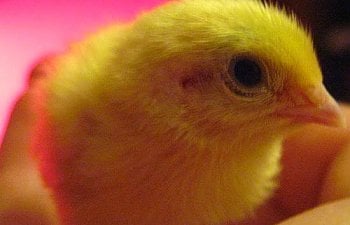
Cute facts:
Coturnix quails will call despiratly when they see you (esp if they are hungry)...it reminds me of a purring yelk (Yelk like what a hen turkey does but quieter) but with a purr to it. I will try to get a video of my quails doing this. It sounds pitiful...these guys seem to always be hungry. They are very willing to eat out of your hand as well.
THey dont like being held, and may even act like you're killing them (crying) not all cry but some do and it's also pitiful and sort of comical. Kind of sounds like a "purreeee!" cry.
I've been puked on SEVERAL times by coturnixs that didn't want held. I don't think they use it as a defence mechanism I think they just freak out and upset their corp and BLAHHHH!


They can have little spats over food, however never any feathers pulled or blood shed, they remind me of siblings fighting over a remaining piece of candy.
A happy coturnix will bow and then bop up a few inches in a little dance...it can sometimes look like popcorn popping when more than one at a time is doing it.
They make a small growling sound when they see a bird flying overhead, they cock their head sideways and look up with one eye to the sky and one or two will growl, its' very light sounding but audible....all the quail will freeze in place when the growl goes out and they all watch the sky until the "threat" is gone.
They LOVE to dust bathe, they will dust bathe in just about anything- their food, bedding, sand, dirt. Give them a dusting box with sand in it and watch them play! They can also eat the sand as grit!
 WARNING: they WILL make a mess
WARNING: they WILL make a mess  .
.Chicks normally hatch in unision....my experience is they hatch in small batches within just seconds from eachother. They call in the egg to eachother and they seem to synrinise thier hatching this way. Don't worry if they ALL dont hatch together give them time.
 I know of some coturnix quail hatchers that their chicks took DAYS after their true hatch date to hatch....so be pacent I know it's hard though!
I know of some coturnix quail hatchers that their chicks took DAYS after their true hatch date to hatch....so be pacent I know it's hard though! 
They sound like crickets, or peeper frogs...esp as chicks, but even adults will make the noise.

Mine huddle in a heep of birds when they're taking a nap...it's extreemly adorable. Most lay on their sides all carefree. *in the pic the small one in the middle is not a coturnix, it's a button quail*
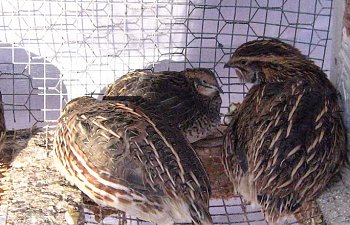
Chick vid: http://i538.photobucket.com/albums/ff341/quailgal/th_MVI_1847.jpg
adult quail vid:
http://i538.photobucket.com/albums/ff341/quailgal/th_MVI_3880.jpg
will add more as I get more pictures and information. HOpe this helps newbies!

State laws and permits *IF YOU KNOW OF ANY OF YOUR STATES LAWS---Especially ones I don't know about please contact me so I can add them to this list for others thank you!*
Alabama- ?
Alaska- Thanks to Mrs AK (Tori) got some offical info : http://www.wc.adfg.state.ak.us/index.cfm?adfg=regulations.misc#aviculture]http://www.wc.adfg.state.ak.us/index.cfm?adfg=regulations.misc#aviculture
5 AAC 92.029. PERMIT FOR POSSESSING LIVE GAME. Section (b) "The following species, not including a hybrid of a game animal and a species listed in this subsection, may be possessed, imported, exported, bought, sold, or traded without a permit from the department but may not be released into the wild: " Click the link above to be sent to the total information
 .
.Arizona- Yep you need a license. I can't find specific information but here is where I found that you do need a licensing for it.
Arkansas- A permit IS needed $50 info provided by a resident of Arkansas and a BYC member, Amanda (rbamterry) thanks![/url]
California- "Licensed Game Bird Club
Issued to any person who owns or controls the hunting rights on a tract of land, raises and/or releases domestically propagated game birds, and allow the taking of these birds under conditions that do not conflict with the public interest. Domestically propagated game birds include only the following: Pheasants of the species Phasianus colchicus, including all ring-necked pheasant races, Indian chukar, domestically reared wild turkey, Hungarian partridge, bobwhite quail, Coturnix quail, and other species as designated by the Commission." http://www.dfg.ca.gov/licensing/specialpermits/specialpermitsdescrip.html]http://www.dfg.ca.gov/licensing/specialpermits/specialpermitsdescrip.html
Colorado- ?
Conneticut: http://www.ct.gov/dep/lib/dep/wildlife/forms_applications/gamebreed.pdf]Game Breeders License Application[/url] Please contact CT's DEP for more information:
Connecticut Department of Environmental Protection
79 Elm Street
Hartford, CT 06106-5127
Phone: 860-424-3000 or email at : [email protected] (Please include your name, postal mail address and telephone number in any e-mail inquiries. In many cases it would be most efficient to respond to you by telephone or postal mail.)
Deleware- Not sure here's some http://www.fw.delaware.gov/Pages/ContactUs.aspx
Florida- ?
Georgia- ?
Hawaii-?
Idaho- Not really sure there is some sort of poession and selling permit however I'm not sure if it applies to coturnixs. http://fishandgame.idaho.gov/cms/licenses/apps/ Heres the info on it.and you can contact Idahos game people http://fishandgame.idaho.gov/inc/contact.cfm here.
Illinois- http://www.fws.gov/offices/directory/ListOffices.cfm?statecode=17 Links to try
Indiana- http://www.fws.gov/offices/directory/ListOffices.cfm?statecode=18
Iowa- ?
Kansas- No PERMIT NEEDED

Kentucky- Looks like a permit Is needed as they seem to be considered an exotic...heres the info i could find .
Louisiana- Not sure but heres some contact info: "2000 Quail Drive Baton Rouge, LA 70808 (225) 765-2800 Business Hours: 8:00 - 4:30, Monday - Friday"
Maine- Posession Application This is a posession application to notify "Maine Department of Inland Fisheries and Wildlife" of what you'd like to raise and why. I am a bit confused as I can't find where it lists what you CAN and can't raise...so you may have to contact them at: Phone: (207) 287-8000 Address: 284 State Street
Augusta, ME 04333-0041 *If I find more, I will surely post it here*
Maryland- Not sure heres some contact info
Massachusetts- Need A permit (will get contact info for you soon).
Michigan- Links to try
Minnesota- Links to try
Mississippi-
Missouri- Not sure here's some links that might help.
Montana- Links to try
Nebraska- Not sure but please check these links out.
Nevada- Not too sure just yet but heres some info that may help get you the info you need: Office Directory Listing
New Hampshire- Not sure yet, however here is contact info for who you can call to find out: Law Enforcement Division
[email protected] Phone: 603-271-3127
New Jersey- A permit is needed for all quail it seems- looks to be $12 total. You will have to sell with each bird(s) a reciept "Game Bird Sales Reciept". Right here is where you can find this info in print: Permit info Here is the link where I found that .
New Mexico- Unsure but these may help...
New York- in NY in order to hatch, sell or breed quail you need a Class A Gamebird Breeders Licence
it is $50 a year and the year goes from April-April not on the new year like one would think.
as far as selling the quail meat in your local farmers market or homestand you are allowed up to 1000 birds with no licence of any kind as long as the birds are grown, and raised and processed by you. You must also be the one selling them, in otherwords the meat/bird can never leave your posession at any time during its life. Recieving day old chicks from a hatchery is an exception since you are the one raising them from the beginning. <---New updated info is from AHappyChick who called the number below and got the updated info!
 Thank you!
Thank you!Please contact here for information and to get the permit needed:
" NYSDEC
Special Licenses Unit
625 Broadway
Albany, NY 12233-4752
518-402-8985"
North Carolina- Need A permit (will get contact info for you soon)
North Dakota- Not sure but you can contact them by email here: [email protected] or call 701-328-6300
Ohio- No permit needed- you can buy, sell, trade and breed these guys free of worry.

Oklahoma- Not sure please check out these links though.
Oregon- Yes a permit is required- it's $8 total for annual permit. You can contact: "ODFW Wildlife District or Regional office or call the ODFW Licensing Section at (503) 947-6100 and ask for a Wildlife Propagation License application form."
Pennsylvania- No permit needed- you can buy, sell, trade and breed these guys free of worry.

Road Island- Any links I try to find on this aren't loading???
South Carolina- Links to try
South Dakota- Not sure but check these links out may be of some help.
Tennessee- Links to try
Texas- Not sure please check out these links
Utah- "http://wildlife.utah.gov/rules/R657-04.php It doesn't specifically mention Corturnix like it does bobwhites and several others, but the number people can call is (801) 538-4700. " Thanks to Heather J I got offical info on this

Vermont- Vermont links I could find that may help find out
Virginia- Possibly the permit application you'd need.
Washington- Yes it seems like a permit IS required heres the application. I got that from HERE .
West Virginia- Not sure yet- if you want information please call Law Enforcement at 304-825-6787 from 8-4pm- I am emailing them to see if I can get info that way as well. You can email them as well at [email protected] .
Wisconsin- Links to try .
Wyoming- Not sure you can contact the Wyoming Game and Fish Department here or call 307-777-4600 .
^ Will add more as I collect the right information- can you help? If you know a states laws on coturnix quail PLEASE PM me, i'll credit you for the INFO and post it on this list

